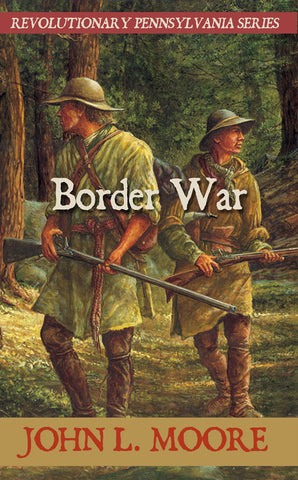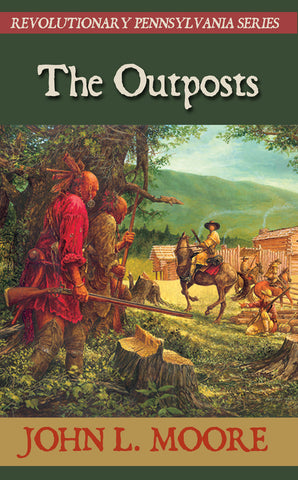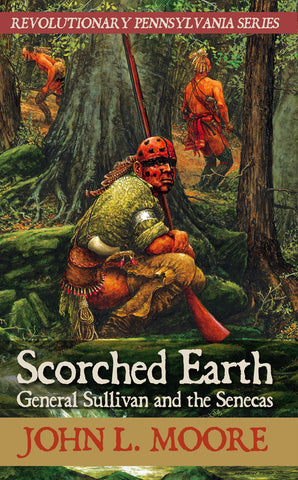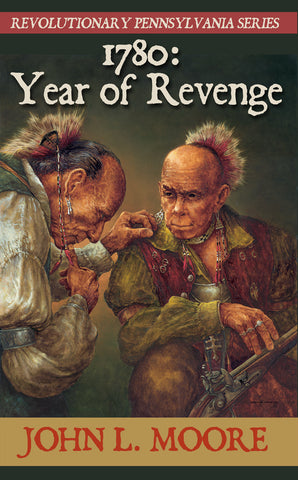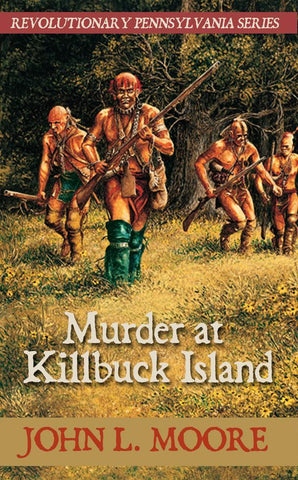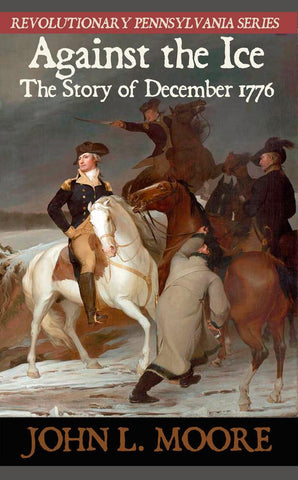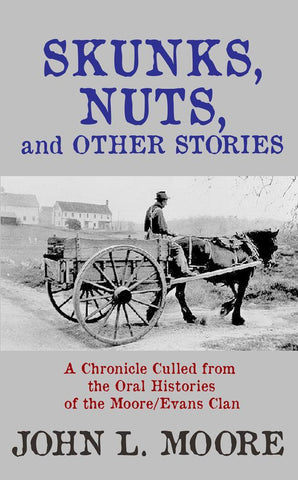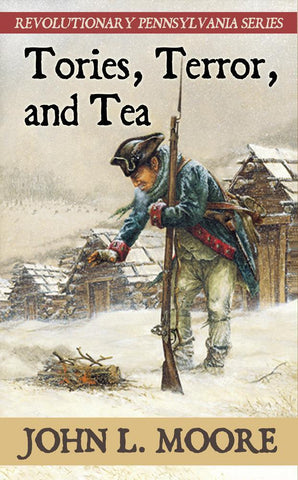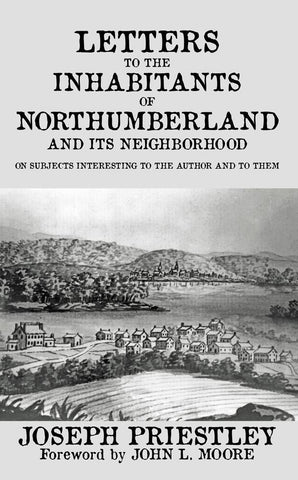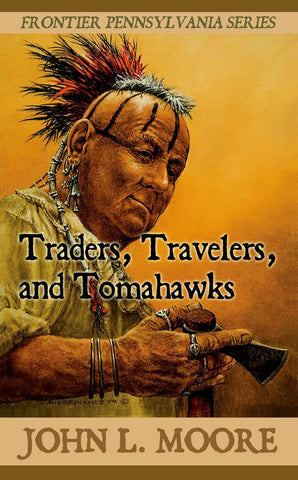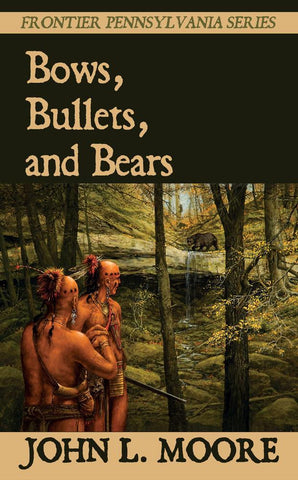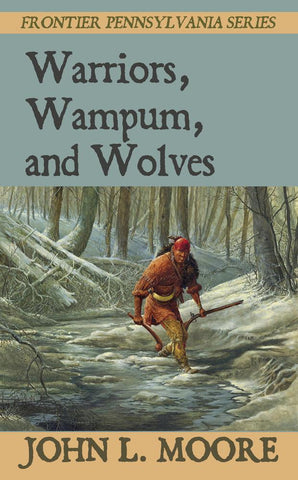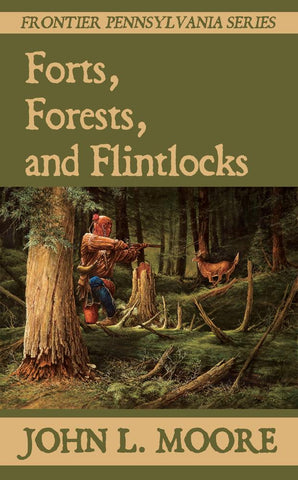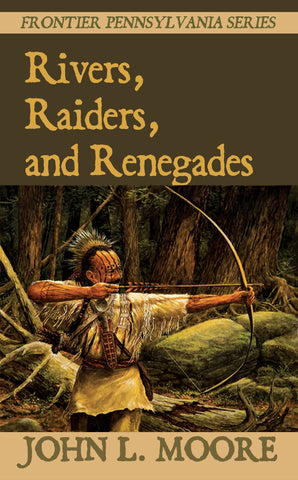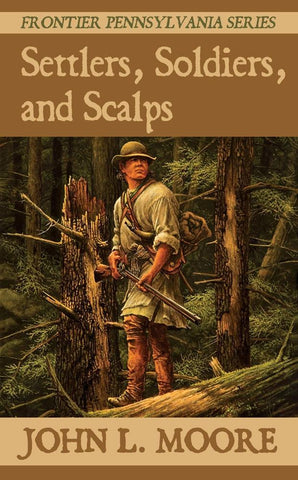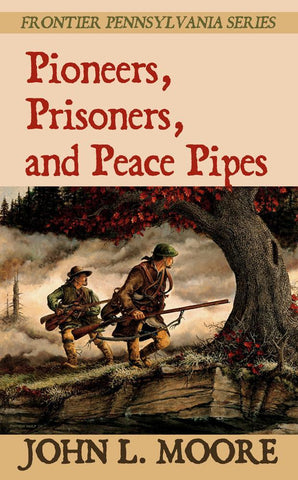by John L Moore
Frontier Pennsylvania Series
Author John L. Moore serves up a miscellany of fascinating depictions of obscure but authentic people and situations in this non-fiction book about the Pennsylvania Frontier between 1743 and 1778.
We meet Sassoonan, an elderly Delaware Indian chief who lived at the Forks of the Susquehanna River. His position made him custodian of the tribal records, which consisted of belts of wampum. Wampum was also a form of currency, and Sassoonan regularly used this wampum to buy rum from the traders who brought it to town.
While visiting an Indian town on an island in the Susquehanna River, the Rev. David Brainerd held his Bible as he hid in the bushes, out of sight of the bonfire and the Native Americans who danced around it. The missionary believed that the Indians were attempting to summon Satan and, as he later wrote in his journal, he intended to “spoil their sport.”
It was January 1756 as General Benjamin Franklin led a column of infantry soldiers and mounted troops into the Blue Ridge Mountains north of Bethlehem and Easton to erect a series of log forts along strategic forest paths. Hostile Indians watched Franklin’s force as the men erected the stockade walls. Ever curious, Franklin himself used his watch to see how long it took two of his men to fell a pine tree.
Mary Jameson was a 15-year-old frontier farm girl when she helped her mother cook breakfast over the hearth in the family’s log house one cold morning in April 1758. The Jamesons don’t know it, but by lunchtime their cabin would be on fire, and all but two of the eight members of the Jameson family would be the prisoners of an Indian raiding party.
WHAT OTHERS ARE SAYING:
“Moore’s tales bear fascinating titles. Who could fail to be intrigued by “Camp Followers Displease Militia Chaplain,” or by “Benjamin Franklin Leads Militia Into Bethlehem,” or by “Chaplain’s Rum Draws Troops To Daily Worship”?
Some of the descriptions Moore takes from his original sources are fascinating, even 250 years later. For example, Benjamin Franklin observes: The Indians “dug holes in the ground about three feet in diameter, and somewhat deeper. ... They had made small fires in the bottoms of the holes, and we observed among the weeds and grass the prints of their bodies, made by their laying all around, with their legs hanging down in the holes to keep their feet warm. ... This kind of fire, so managed, could not discover them, either by its light, flame, sparks, or even smoke.” What an image!
One unusual tale is “Even Indians Become Lost, Hungry In Forest.” This is the chilling story of an Indian mother who, with her three children, was trapped in an early blizzard in 1739 on a mountain near present-day Lock Haven while traveling the Great Shamokin Path. The gruesome details were recorded by Moravian missionary John Heckewelder, and Moore passes them on to the reader without comment.
~ Thomas J. Brucia, Houston, Texas.
Bibliophile, outdoorsman and book reviewer
Page Count: 102
Trim Size: 5 x 8
Publish Date: December 4, 2014
Imprint: Sunbury Press
Genre: History
HISTORY / United States / State & Local / Middle Atlantic
HISTORY / United States / Colonial Period (1600-1775)



